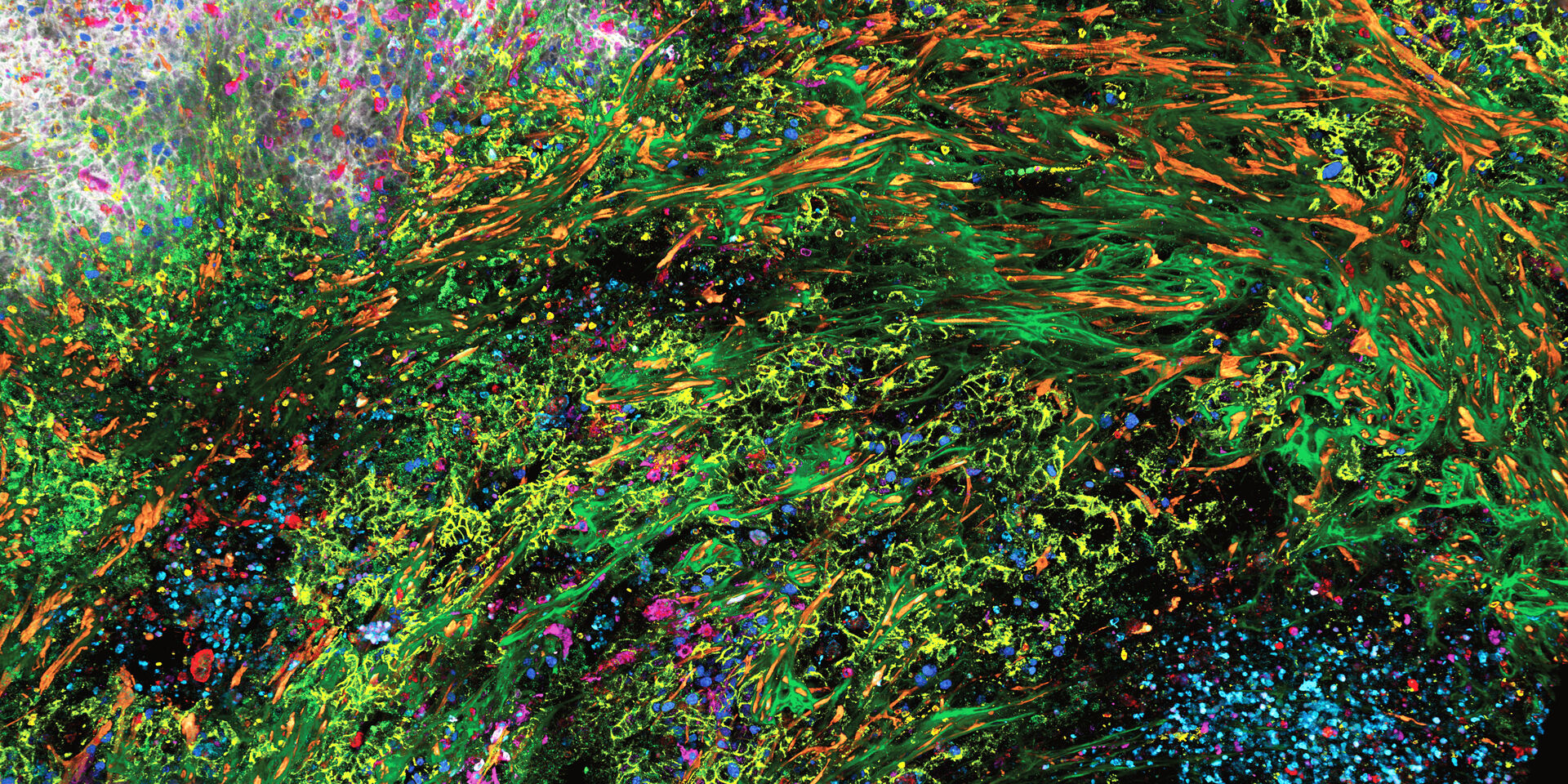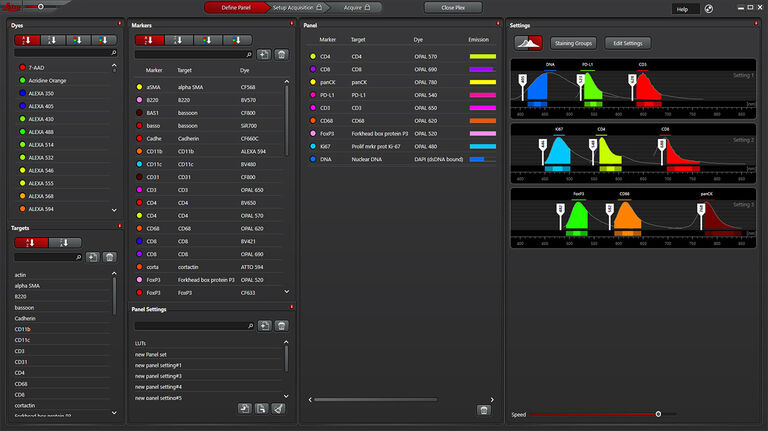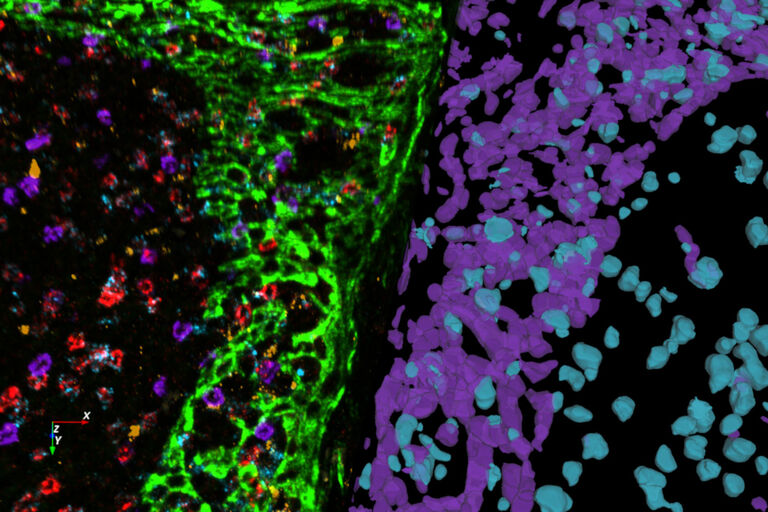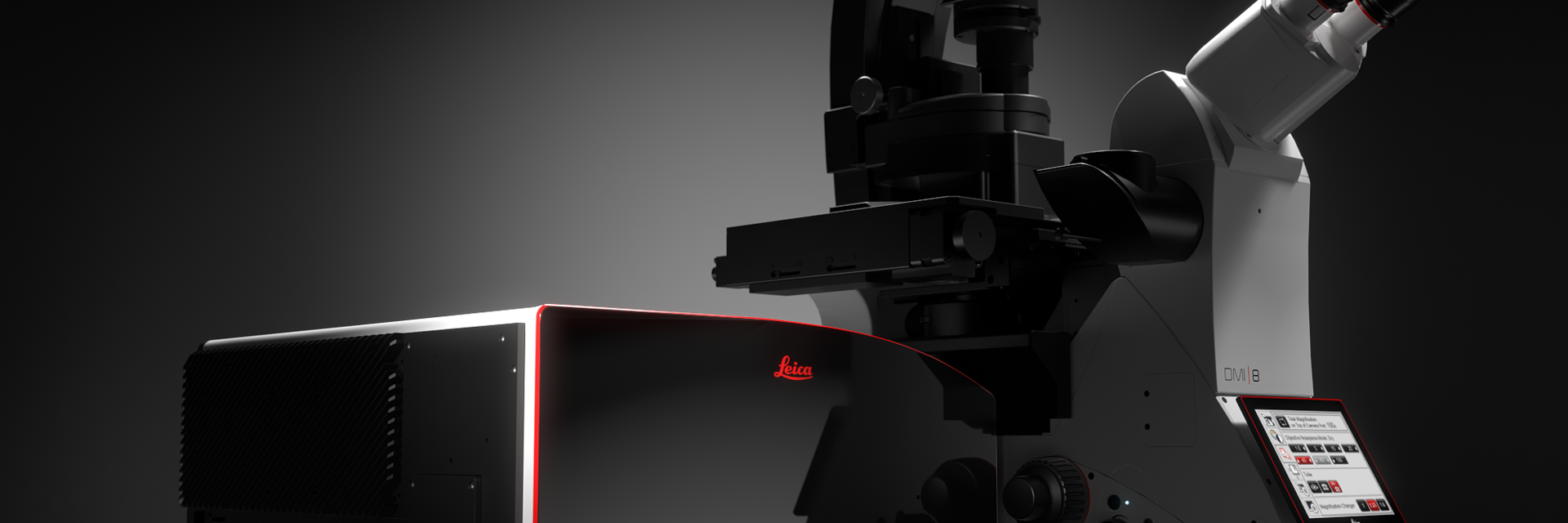SpectraPlex 3D High-Multiplex Solution for Spatial Discoveries
SpectraPlex for STELLARIS is a comprehensive solution for 3D high-multiplex imaging in spatial biology. It provides a streamlined workflow to simplify panel creation, automate acquisition settings, and acquire data through advanced unmixing algorithms. With SpectraPlex you can ensure data quality and reliability across scales. SpectraPlex facilitates new insights into cellular organization, interactions, and spatial phenotyping. Get the power to see more and the productivity to do more. Whether in cancer research, immunology, or neuroscience.
Access 3D high-multiplexing across scales in one go
With SpectraPlex, you can now visualize multiple targets in one go, and at the right resolution. This enables functional descriptions of immune cells, cancer fingerprints, and structural hallmarks in tissues.
Thoroughly explore distribution patterns and spatial phenotyping with SpectraPlex. Capture intricate details from intracellular structures to tissue samples with comprehensive spatial context.
Reduce complexity and effort in your approach. Sophisticated spectral unmixing algorithms let you go beyond the limits of traditional multicolor imaging. Separate 15+ fluorophores on-the-fly in one go, in a single round of sample labeling and imaging.
Video source: 3D high-multiplex imaging in cancer immunology. Kunz L., Speziale D., et al., Nat. Methods (2024). https://www.nature.com/articles/d42473-024-00260-7
Design experiments in advance with integrated functionalities
Plan your experiments, explore and optimize options with the Virtual Fridge and Design Panel functionalities. Streamline your workflows, reducing setup time. Research teams can discuss panel permutations before the experiment is started , freeing up precious instrument time.
- The Virtual Fridge keeps a database of the markers in your lab. Create, store, and manage markers for direct access.
- The Design Panel automatically generates optimized settings to explore panel permutations considering fluorophore properties.
Intelligent data management with flexible advanced control
SpectraPlex lets you manage data with minimal human interaction. It provides you with intelligent guidance in the design of experimental controls, increasing the reliability of your data. Advanced users keep the full flexibility with customizable settings.
Reduce manual errors and save time. SpectraPlex automatically presents optimized acquisition settings. They are dynamically adapted to the required acquisition speed. Initial excitation powers are suggested for balanced signals across channels.
Fully streamlined spatial discovery solutions with Aivia
With Aivia, our AI-powered imaging analysis software, you can extract meaningful insights from your data. Simply transfer your results from STELLARIS to Aivia for an expert- and data-driven approach for cell clustering and phenotyping.
Aivia gives you the right tools at hand to visualize complex data and spatial relationships.
Use the productivity to do more. Generate spatial insights in 3D with interactive exploration options.
Add Spatial Biology to your confocal portfolio
Incorporate Spatial Biology to expand your research. SpectraPlex allows you to evaluate relevant markers simultaneously. This preserves cellular context and interactions. And it ensures that samples are intact, and markers present for re-evaluation.
Benefit from Spatial Biology with confocal imaging.
- The STELLARIS microscope suits applications from sub-cellular resolution to complex 3D tissue.
- Maximize photon collection and ensure reliable signal quantification.
- Utilize the full confocal capabilities of STELLARIS and the integrated modalities for complementary key insights.








